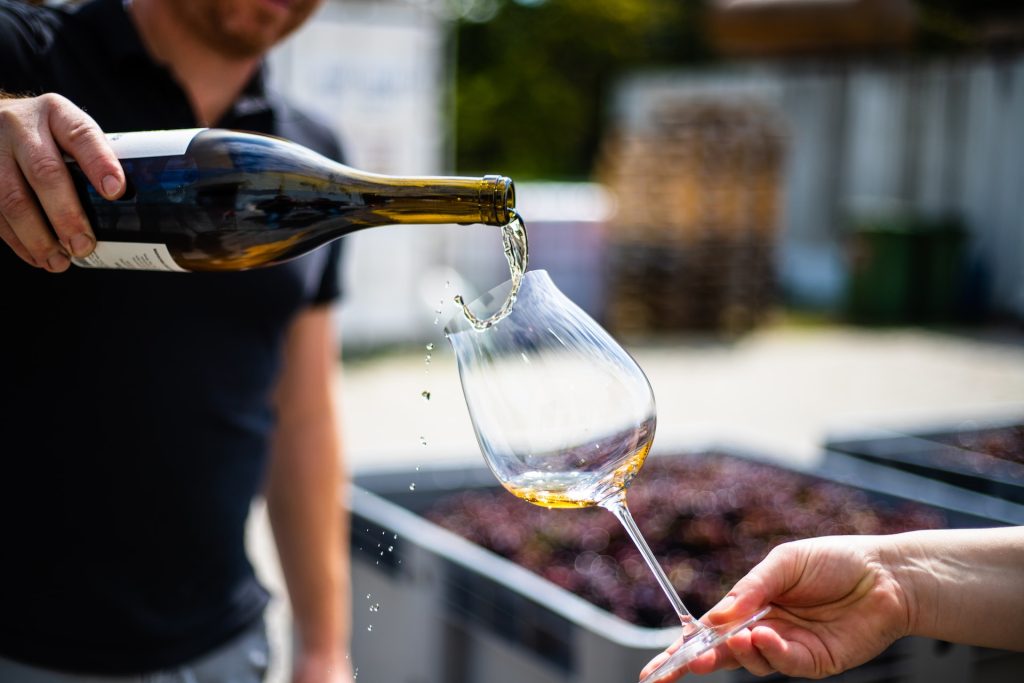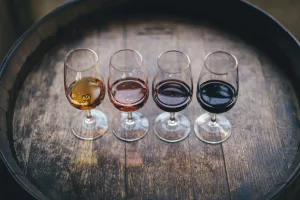
A recent trip to Las Vegas brought about a unique conversation at a bar with a lovely couple from Washington D.C. I had asked the bartender for the price of what has deemed a rare or somewhat rare bourbon I saw on the shelf. The bartender replied that it was $150 per 2 oz. pour. Pass. The husband of the lovely couple then asked me if he had actually heard correctly in that the price was $150. I of course obliged with an answer and the conversation about alcohol and its intricacies ensued. After a long discussion about the more than 740 different bourbon distillers in the United States (we of course did not discuss each one, but rather rattled of some we were both aware of or had visited…his was Jack Daniels in Tennessee and Fiddler in Atlanta, Georgia).
The conversation traversed to mixed drinks, the science of a good old fashioned and why a Bloody Mary is a remarkable Sunday brunch drink (hair of the dog that bit you type of thing). A drink later the interview of what we did as a profession in our past, present, and ideally future became the topic. It’s always intriguing to me what people do. I love to ask the question not so much as to hear their job or how they do their job, but to see what level of enthusiasm they answer the question with. The people that love what they do are usually immediately happy you asked and of course, want to tell you about the company they have built, the animals they have rescued, the floors they have shined, or the cars they have sold. The people that are not as enthusiastic typically answer in a flat monotone voice and that is the indication to either skip on to the next topic or politely compliment them for their years of commitment to whatever it is they have been doing.
This dance of a conversation usually leads people to ask what I do…or what we do as a company.
We design, engineer, and build wine cellars. In all of my years doing this, I have yet to meet someone that is bored with that answer. Perhaps it’s because I deliver the answer with such vigor? Wine cooling is not a topic that people usually sit around and talk about, certainly not to a stranger. It does become a part of the conversation as they are always intrigued by the level of effort put into the insulation factor, door glass type, wine cooling system albeit ducted or non-ducted…they still enjoy the engineering discussion on a very high-level skimming over thermal dynamics conversation.
The gentleman from this particular conversation asked me a somewhat interesting question of why do wine bottles have to be stored on their side and liquor bottles not.
The answer is simple. The alcohol content in liquor is much higher than it is in wine. The average alcohol content in wine ranges from 12-15%. The average liquor starts (depending on the state…wine, spirits, liquor) is usually 40%. High-proof alcohol is not good for wood. As the top exporter of cork, anyone that has worked on harvesting cork in Portugal will quickly advise you that high alcohol will rot the cork.
Why does the wine not rot the cork…frankly it is too low in alcohol to create cork rot. Wine by contrast SHOULD have the cork wet all the time to keep it moist so that upon opening the bottle it does not break into many shards. I am certain it has happened at least once to anyone reading this. The challenge becomes getting the balance of the cork our of the bottle without otherwise pushing it down into the bottle and adding a piece of wood to every sip you take. Oak flavor is one thing, but cork…not exactly something anyone wants in their glass of wine.
Why don’t all retailer keep their wine refrigerated in wine refrigeration system or a wine cabinet? This is a riddle that has never been solved. The cost of wine refrigeration is not expensive and provides a message to customers that “we know what we are doing and the wine you are looking at has been properly stored”. Wine on a shelf at a retail store, particularly “a dusty” that is stored upright without any sort of refrigeration tends to push me to move along.
As I explained all of this to the gentleman and his wife, they were both intrigued and the thought process was apparent that they had bottles at home that were not stored properly and based on his wife’s stare, they will probably be calling to get a wine storage cabinet from us in the near future.
Until next time, remember to tilt your bottles and keep them at the proper temperature so you tremendously reduce the chance of cork in your wine!

In the vibrant city of Los Angeles, CA, numerous wine enthusiasts are actively exploring optimal wine storage solutions. Fueled by a deep appreciation for fine

In Los Altos Hills, CA, the growing demand for tailor-made wine cellars has spurred advancements in wine refrigeration expertise. Many wine enthusiasts aspire to acquire